
International Journal of Heavy Vehicle Systems
Scope & Guideline
Driving Innovation in Heavy Vehicle Systems
Introduction
Aims and Scopes
- Vehicle Dynamics and Control:
Research on the dynamics of heavy vehicles, including stability, control systems, and ride comfort, is a core focus. This includes studies on lateral stability, braking systems, and the influence of vehicle parameters on performance. - Energy Efficiency and Alternative Fuels:
Exploration of energy management strategies, hybrid systems, and alternative fuel technologies for heavy vehicles. This includes investigations into fuel consumption, emissions reduction, and the integration of electric and hybrid drive systems. - Intelligent Transport Systems (ITS):
The journal emphasizes the development of intelligent transport systems that enhance traffic management, vehicle-to-everything (V2X) communication, and autonomous vehicle technology. - Material and Structural Analysis:
Research on materials used in heavy vehicles, including fatigue analysis, vibration suppression, and structural optimization. This area aims to improve durability and performance through advanced material science. - Simulation and Modelling Techniques:
The use of simulation and modeling to predict vehicle performance under various conditions is a significant methodological approach in the journal. This includes dynamic modeling, computational fluid dynamics (CFD), and finite element analysis (FEA).
Trending and Emerging
- Autonomous and Connected Vehicle Technologies:
There is a growing emphasis on research related to autonomous vehicles and their integration into existing traffic systems. This includes studies on vehicle-to-vehicle (V2V) and vehicle-to-infrastructure (V2I) communication. - Sustainability and Green Technologies:
An increasing number of papers focus on sustainability, including the use of alternative energy sources, energy-efficient designs, and the life cycle analysis of heavy vehicles. This trend reflects a global shift towards reducing the environmental impact of transportation. - Advanced Control Systems and AI Integration:
The integration of artificial intelligence and advanced control systems for improving vehicle performance and safety is becoming a prominent theme. This includes machine learning applications for predictive maintenance and optimization of vehicle dynamics. - Smart Infrastructure and Traffic Management Solutions:
Research is trending towards developing smart infrastructure solutions that enhance the efficiency of heavy vehicle operations, including intelligent traffic light systems and urban planning for heavy vehicle routes. - Robotics and Automation in Heavy Vehicle Systems:
The use of robotics and automated systems for monitoring, maintenance, and operation of heavy vehicles is on the rise. This includes autonomous monitoring systems for construction vehicles and robotic interventions in logistics.
Declining or Waning
- Traditional Mechanical Systems:
Research focused on conventional mechanical systems without integration of modern technologies (e.g., basic hydraulic systems) has seen a decrease, as the field moves towards more integrated and intelligent solutions. - Basic Diesel Engine Studies:
With the increasing focus on alternative fuels and electric vehicles, traditional studies on diesel engine performance without consideration of hybridization or emissions control have diminished. - Static Safety Analysis:
Static analyses of vehicle components, which do not incorporate dynamic factors or real-world conditions, appear to be waning in favor of more holistic approaches that consider dynamic interactions and performance under various operational scenarios.
Similar Journals

Journal of Unmanned Vehicle Systems
Leading the charge in unmanned vehicle research and collaboration.Journal of Unmanned Vehicle Systems, published by CANADIAN SCIENCE PUBLISHING, is a leading peer-reviewed journal dedicated to advancing the field of unmanned vehicle technology. With an ISSN of 2291-3467, this journal provides an essential platform for researchers and professionals interested in the intersection of engineering, computer science, and control systems as they pertain to unmanned vehicles. The journal has achieved commendable rankings in Scopus, including a rank of #17/118 in Mathematics - Control and Optimization and #23/131 in Aerospace Engineering, reflecting its impact in these significant areas. As an open-access journal, it fosters global collaboration and accessibility, ensuring that innovative research in unmanned vehicle systems reaches a broad audience. The journal's objectives are to publish high-quality research articles, technical notes, and reviews that contribute to the understanding and development of autonomous systems. With its coverage spanning from 2013 to 2021, the Journal of Unmanned Vehicle Systems remains a vital resource for advancing discussions and knowledge in this rapidly evolving field.
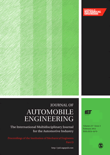
PROCEEDINGS OF THE INSTITUTION OF MECHANICAL ENGINEERS PART D-JOURNAL OF AUTOMOBILE ENGINEERING
Driving Innovation in Automobile EngineeringPROCEEDINGS OF THE INSTITUTION OF MECHANICAL ENGINEERS PART D-JOURNAL OF AUTOMOBILE ENGINEERING, published by SAGE PUBLICATIONS LTD, is a premier peer-reviewed journal dedicated to advancing the field of automobile engineering. Established in 1989, this journal serves as a vital platform for researchers, professionals, and students interested in the latest advancements in automotive technology and engineering practices. With a significant focus on aerodynamics, vehicle dynamics, and safety innovations, it consistently ranks in the Q2 quartile within both Aerospace Engineering and Mechanical Engineering, showcasing its influence and reliability in the academic community. The journal is indexed in Scopus with impressive rankings, being placed in the 41st percentile for Aerospace Engineering and the 214th percentile for Mechanical Engineering, further solidifying its importance in these fields. As an important resource for cutting-edge research, the journal does not currently offer open access, making it a great venue for disseminating substantial findings that drive the future of automotive innovation.
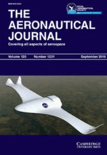
AERONAUTICAL JOURNAL
Elevating the standards of aerospace scholarship.Aeronautical Journal, published by Cambridge University Press, is a premier scholarly journal dedicated to advancing the field of aerospace engineering. With a notable impact factor, this journal holds a strong position in the academic community, ranked #53 out of 153 in the Scopus category of Aerospace Engineering, placing it in the 65th percentile. The journal has been providing a platform for groundbreaking research since its inception in 1969, and continues to be a vital resource for researchers, professionals, and students involved in aeronautics. As a Q2 journal in the 2023 Aerospace Engineering category, it offers high-quality articles that cover a range of topics within the discipline, contributing to the ongoing discourse and innovation in aerospace technologies. Although not an open-access journal, it remains accessible to a vast readership through institutional subscriptions and partnerships. The Aeronautical Journal is a crucial publication for those seeking to stay at the forefront of aerospace research and development.
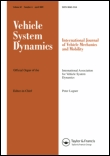
VEHICLE SYSTEM DYNAMICS
Exploring the future of safe and efficient vehicle design.VEHICLE SYSTEM DYNAMICS, published by Taylor & Francis Ltd, is a premier journal dedicated to advancing the field of automotive and mechanical engineering. With an impressive impact factor and categorized in the top quartiles (Q1) of Automotive Engineering, Mechanical Engineering, and Safety, Risk, Reliability, and Quality, this journal has established itself as a vital resource for researchers, industry professionals, and academics alike. Spanning from 1972 to 2024, VEHICLE SYSTEM DYNAMICS focuses on disseminating high-quality, peer-reviewed research that addresses critical challenges and innovations in vehicle dynamics and system performances. The journal is based in the United Kingdom and continues to contribute significantly to the global discourse on safe and efficient vehicle design and operation. Readers can access the journal's content through various platforms, ensuring the latest research is readily available to inform and inspire future advancements in the field.
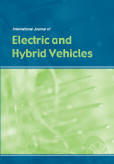
International Journal of Electric and Hybrid Vehicles
Transforming Mobility Through Innovative Research and DevelopmentThe International Journal of Electric and Hybrid Vehicles, published by INDERSCIENCE ENTERPRISES LTD, serves as a pivotal platform for scholarly discourse within the automotive engineering and renewable energy sectors. Established in 2007, this journal focuses on advancing research related to electric and hybrid vehicle technologies, encompassing innovations in design, performance, and environmental sustainability. With its rankings reflecting a Q3 status in Automotive Engineering and Fuel Technology, along with a Q4 in Renewable Energy, Sustainability and the Environment, it occupies a significant space within the academic community. Researchers, professionals, and students can benefit from its comprehensive coverage of theoretical and practical applications. Though not open access, its articles contribute valuable insights and advancements that drive the global transition towards greener transportation solutions. As the journal converges towards its 2024 goal, it remains committed to the dissemination of high-quality research that shapes the future of sustainable mobility.

Frontiers in Mechanical Engineering-Switzerland
Driving Breakthroughs in Engineering ScienceFrontiers in Mechanical Engineering-Switzerland, published by FRONTIERS MEDIA SA, is a pioneering open-access journal that has been fostering innovations in the field of mechanical engineering since its inception in 2015. Based in Switzerland, this journal provides a robust platform for disseminating cutting-edge research across multiple disciplines within mechanical engineering, including materials science, industrial and manufacturing engineering, and computer science applications. With impressive Scopus rankings, including Q2 statuses in key categories such as Industrial and Manufacturing Engineering and Mechanical Engineering, it stands out as a valuable resource for researchers and practitioners aiming to stay abreast of trends and breakthroughs in these fields. By embracing open-access principles, the journal ensures that high-quality research is readily available to a global audience, thereby promoting collaboration and knowledge sharing. As it continues to grow, Frontiers in Mechanical Engineering is poised to make significant contributions to both academic and professional communities, enhancing understanding and advancing practices in engineering disciplines.
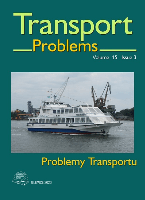
Transport Problems
Driving Knowledge Forward in Automotive and Mechanical EngineeringTransport Problems, published by the Silesian University of Technology, Faculty of Transport, is a distinguished open-access journal that has been advancing scholarship in the fields of Automotive Engineering, Mechanical Engineering, and Transportation since its inception in 2007. With an ISSN of 1896-0596 and an E-ISSN of 2300-861X, this journal serves as a vital platform for researchers and practitioners to disseminate innovative research findings and explore fundamental issues in transport systems and technologies. Based in Poland, the journal covers various topics including transportation logistics, vehicle dynamics, and environmental impacts, thereby addressing critical challenges faced in the transportation sector globally. As reflected in its Scopus rankings, the journal occupies respectable quartiles and continues to contribute valuable insights to the academic community. By making its content freely accessible, Transport Problems significantly enhances the ability of researchers and students alike to engage with the latest developments in transport engineering and contribute to this ever-evolving field.

SAE International Journal of Commercial Vehicles
Shaping the Landscape of Commercial Vehicle EngineeringSAE International Journal of Commercial Vehicles, published by SAE International, stands at the forefront of automotive engineering research, fostering innovation and development in the commercial vehicle sector. With an ISSN of 1946-391X and an E-ISSN of 1946-3928, the journal plays a critical role in disseminating high-quality research, theoretical advancements, and practical applications across various facets of commercial vehicles. As part of the notable SAE publication portfolio, it enjoys a respectable 2023 Q3 ranking within the automotive engineering category and holds a significant position at Rank #72/125 in Scopus, reflecting its growing impact and relevance. The journal's themes encompass innovative technologies, safety advancements, and regulatory developments, providing researchers and industry professionals with vital insights essential for tackling contemporary challenges. Though currently not an open-access publication, its contribution to the engineering community is invaluable, paving the way for future studies and collaborative efforts in the automotive field.

International Journal of Intelligent Transportation Systems Research
Navigating the Next Generation of Intelligent SystemsInternational Journal of Intelligent Transportation Systems Research, published by Springer, stands as a premier platform for disseminating cutting-edge research in intelligent transportation systems (ITS). Established in 2010, this journal has made significant strides in addressing the complexities and innovations within the realm of transportation engineering, automotive technology, control systems, and information systems, reflected in its impressive categorization across diverse engineering and applied mathematics disciplines with notable rankings in Q2 and Q3 quartiles. With a steadfast commitment to advancing knowledge and fostering discussions that bridge academia and industry, the journal welcomes high-quality research articles, reviews, and case studies that explore emerging trends, technologies, and methodologies shaping the transport sector. Researchers, professionals, and students alike will find a wealth of insights aimed at optimizing operational efficiencies and enhancing safety and sustainability in transportation networks. As of 2023, the journal continues to thrive, seeking to compile contributions that align with its mission of improving transportation systems globally.

Ingineria Automobilului
Exploring the Frontiers of Automotive Design and SafetyIngineria Automobilului is a prominent journal dedicated to advancing knowledge in the field of automotive engineering. Published by the SOC AUTOMOTIVE ENGINEERS ROMANIA, this journal serves as a vital platform for the dissemination of high-quality research, innovative methodologies, and groundbreaking applications in automotive technology. With an ISSN of 1842-4074, it provides an essential resource for researchers, professionals, and students who are committed to the development and enhancement of automotive systems. Although the journal currently does not offer open access, its contributions are crucial for ongoing advancements in automotive design, safety, and sustainability. The publication aims to foster collaboration between academia and industry, emphasizing the importance of interdisciplinary approaches in solving complex challenges facing the automotive sector today. By facilitating discussions on emerging technologies and engineering practices, Ingineria Automobilului continues to play a pivotal role in shaping the future of automotive engineering.